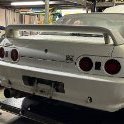Announcements
-
Similar Content
-
Latest Posts
-
Not the same thing, in case you were confused. The "wire" he spoke of is the heated wire, which is the sensing element inside the AFM.
-
In which case it hardly matters either (and there's got to be no way that anyone would want to stick with the factory blue, because it is goddamn yawntastic).
-
By Igotnothin · Posted
So I ordered a new MAF it could be a charcoal canister I've checked the wire and I don't see any oil on it but would it be wise to replace the wire harness too for it or just wait till I get the new one and see if the issues pop up again? -
Surely after 35 years you need to match the existing colour rather than painting factory, unless you are going to do the full car
-





Recommended Posts
Create an account or sign in to comment
You need to be a member in order to leave a comment
Create an account
Sign up for a new account in our community. It's easy!
Register a new accountSign in
Already have an account? Sign in here.
Sign In Now